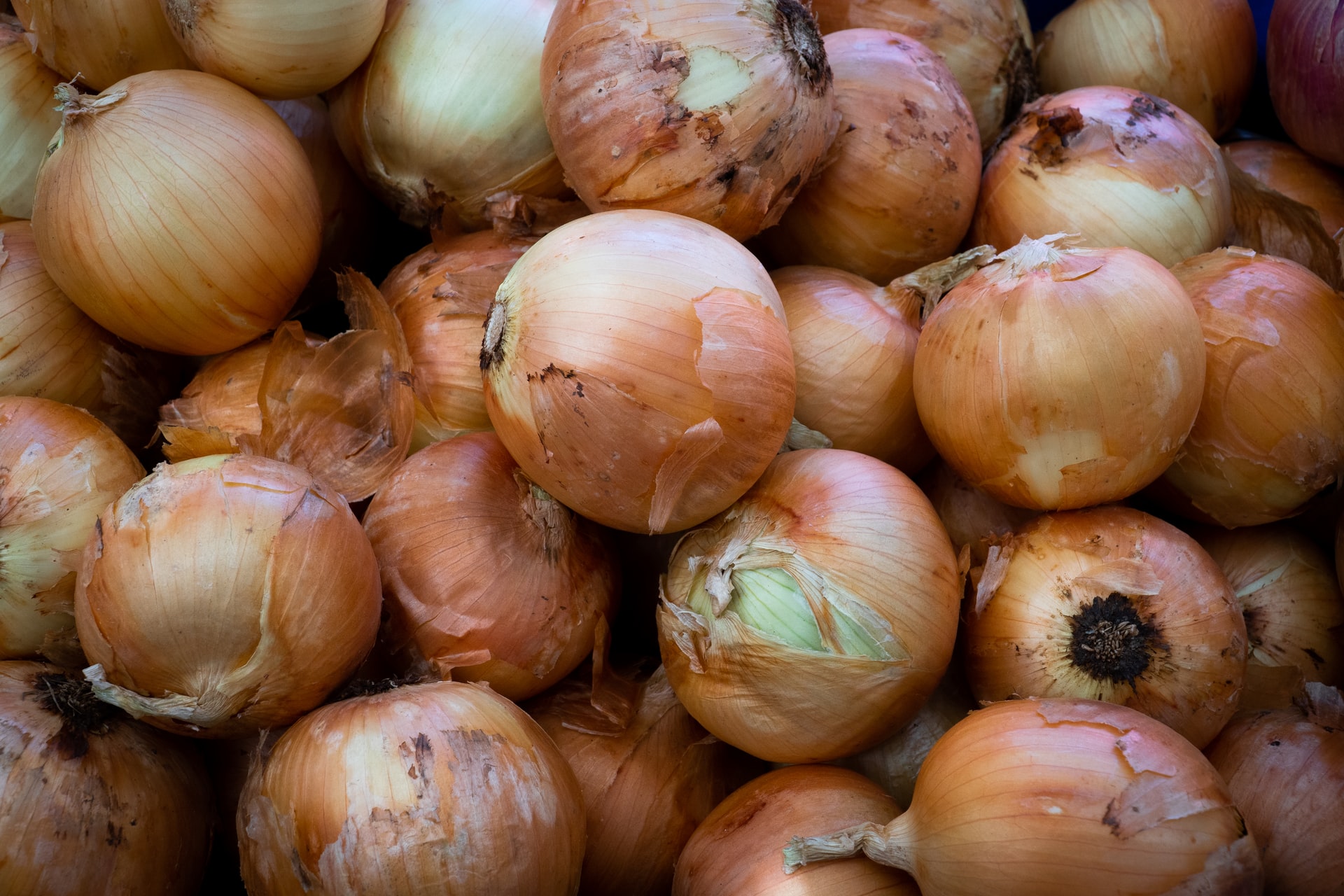An onion can be a biennial or triennial plant.
Biennial Cycle:
- In the first year, the plant develops a bulb from seed.
- In the second year, after a dormancy and vernalization phase, it flowers and produces seeds.
Triennial Cycle:
- In the first year, a set (small bulb in the juvenile phase) is developed.
- In the second year, a bulb (the edible part) grows from the set.
- In the third year, after vernalization, the plant flowers and produces seeds.
The root system is predominantly shallow, thick, poorly branched, and mostly lacks root hairs. Onion roots often host mycorrhizal fungi, which enhance nutrient absorption.
The stem is very short (a disk-shaped base), from which the leaves develop.
The leaf consists of sheaths that wrap around the false stem and a blade that is tubular and hollow, dark green in color, and covered with a waxy coating.
The bulb, a storage organ (storing assimilates during dormancy), consists of a shortened stem (base) and thickened, juicy leaf sheaths. In the center of the bulb is a bud (sprout) from which new leaves or the flowering stalk develop in the next growing season. A bulb produced from seed has only one sprout, while a bulb from a set can have 2 – 4 sprouts. Before entering dormancy, the outer 3 – 4 thickened leaf sheaths become scaly, protecting the bulb from damage and rapid water loss.
In the generative phase, a flowering stalk develops, which is hollow and can reach 1 – 2 meters in height, bearing a simple umbel with more than 100 flowers on stalks 3 – 4 cm long.
The flowers are white to greenish, with 6 stamens and a pistil – cross-pollination predominates.
The fruit is a capsule containing up to 6 black seeds. One gram contains 200 – 250 seeds.
Long-Day Cultivars
These require day lengths longer than 16 hours for bulb development. They are sown in the spring, with bulbs developing by late summer.
Intermediate-Day Cultivars
These need 13 – 15 hours of daylight and are grown in temperate zones as winter crops, with bulbs developing by spring or mid-summer.
Short-Day Cultivars
These are adapted to tropical areas around the equator, requiring 11 – 12 hours of daylight for bulb development.
If cultivars with inappropriate day lengths are grown in a specific production area, profitable bulb production cannot be expected.
The most favorable conditions for bulb ripening are dry and warm weather with temperatures above 25°C. The ripening phase begins when the false stem softens and bends, causing the leaves to lay flat on the ground. Even while the leaves are flattened, as long as they are green, the bulb continues to grow and accumulate assimilates.
When plants, after completing the juvenile phase, are exposed to temperatures below 18°C for several weeks, they undergo vernalization, meaning they become capable of developing reproductive organs and producing seeds when the time is right. The optimal temperatures for vernalization are 9 – 13°C, and the duration of vernalization decreases as the plants become more developed.













































